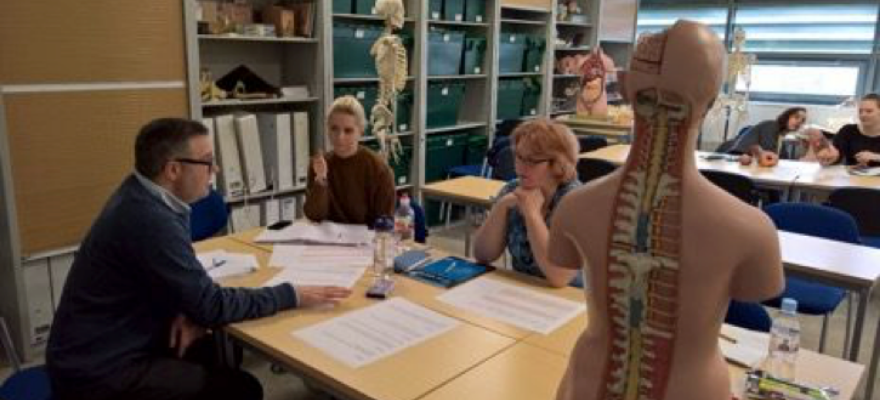
Blog

Student-staff collaboration in learning and teaching has been an influential movement in UK higher education (HE) particularly over the last decade. An innovative student-staff collaborative observation project at Birmingham City University (BCU) between 2016 and 2018 adds to this body of work. This blog post uses findings from the project case studies to explore the notion of ‘classroom consciousness’ and some of the key ingredients that enable meaningful student-staff collaborative learning about classroom learning and teaching.
Improving teaching and learning through collaborative observation was a small-scale innovative and experimental project that involved students and staff from five undergraduate programmes in education and healthcare. The project used the shared lens of classroom observation as a reciprocal reference point for exploring teaching and learning at course level. As part of the project, we developed an innovative Cycle of Collaborative Observation (CoCO), which provided a framework that embodied our conceptualisation and methodological approach to fostering a staff-student collaboration focused on learning about learning and teaching with reciprocal value for both parties.
Background to the project
This project was against the backdrop of the introduction of the Teaching Excellence Framework (TEF, BIS 2015). In our previous work we argued that the flawed ideologies and methodologies of the TEF provide us with limited situated understandings of learning and teaching and fail to bring about meaningful improvements of learning and teaching to HE students and their teachers (O’Leary & Cui 2018). Counter to neo-liberal consumerist approaches to evaluating HE, CoCO was created based on reconceptualising key aspects of HE culture and practices in terms of pedagogical relationships, knowledge production and dissemination, and learning and teaching evaluation mechanisms.
During the two years of the project, students and staff generated a rich bank of data including recordings of discussions before and after observations, observation notes, and reflective accounts about their experiences and learning. When we looked through the data with staff members involved in the project, a key concept emerged across the case studies. We coined this ‘classroom consciousness’ - inspired by Bowden and Marton’s ‘collective consciousness’.
Collective consciousness
Collective consciousness is an awareness of others’ ways of seeing things. According to Bowden and Marton, through the lens of collective consciousness students and teachers develop an awareness of different and complementary ways of seeing which enable us to build richer understandings of the world around us. In the context of higher education, this line of reasoning presupposes respect for different experiences and views over learning and teaching and celebrates diversity and variation. When we think about academic research, a respect for others and views underpins our ethics; the same principles ought to underpin our ethics of learning and teaching in higher education.
In our work using CoCO, the creation and development collective consciousness by students and staff was located in their classroom. Observation was a reciprocal point of reference for students and staff to come together to co-inquire, co-observe and co-reflect on their understanding of learning and teaching in the context of their course. In this way, an understanding and appreciation of different experiences, views and assumptions started to develop through the dialogues between students and staff.

Classroom consciousness
What also emerged from data are some key ingredients that enabled our case study participants to co-develop ‘classroom consciousness’ through two cycles of observations. In Cycle 1, each case study focused on understanding the impact of teaching on student learning, exploring key aspects of teaching such as pedagogical approaches, the classroom environment, resources etc. The lecturers decided the focus of the observations and led the discussions during the pre- and post- observation meetings.
Through this process, students developed insights on the teaching approaches used by their lecturers, the assumptions behind them and the intensions on learning. Using this knowledge, students examined how they went about learning. What Cycle 1 started to develop was a collaborative pedagogical relationship between students and staff in the context of their programme. This relationship was built and enhanced by students and staff having trust, openness and empathy amongst them - key ingredients to ethics of learning and teaching in higher education that promotes respect for different experiences and views and celebrates diversity and variation.
From teaching to learning
Cycle 1 laid the foundation for the subsequent observation cycle to shift the observation focus from teaching to learning. As well as building a collaborative pedagogical relationship between students and lecturers, students also started to engage with pedagogical languages and concepts they were not aware of previously. This enabled them to reflect on their experiences with deeper understandings on learning and teaching and more considerations over the classroom learning and teaching they are part of. Students started noticing more and expressing what they noticed reflexively that involved them questioning their existing knowledge and understanding of a topic while simultaneously assimilating the new information presented by their lecturers/peers.
The shift to focus on learning in Cycle 2 enabled students to take ownership of their learning and their participation in the collaboration. Aneesa, one of the students, shared her thoughts at the post-observation meeting after reflecting on her experiences of sessions observed in Cycle 2:
‘I think for me, I’m in control of how I learn. So if I walk into a room and I sit at the back, already I’m telling myself, “Okay I know what this session is on, let’s sit at the back because I don’t know whether I’m going to engage or not.” The ownership bit comes with, “I’m here to learn” and every session is important so I have to kind of tell myself, “No, you are going to sit at the front and you are going to try and take something away from this.” So, for me that’s what ownership of my own learning is going to be … There was a session where I knew that this is something I’m going to base my assignments on. But I know it was a session I struggled with, so I thought, “I’m not going to sit at the back because if I miss say even one point, I’m gone for the whole session.” … Because sometimes when I get lost, I just can’t focus on the rest of it. So that session made me sit at the front and I noticed that I actually did stay committed to the session throughout the whole thing. So after Natalie’s session, I reflected, I think sitting more central at the front, it’s a bit better for me and my learning’.
Conclusion
The conceptual underpinning and the model of CoCO played a critical role in facilitating the development of classroom consciousness. For each participant, the individual reflections at the beginning and end of the cycle gave them the space to develop their autonomous voices. In their reflections, each participant openly talked about their experiences of the sessions and reflected on their feelings and views which then led to their questions on learning and teaching. When the participants came together at the pre- and post-observation meetings, they used their voices to negotiate and build the interconnecting part of their collaborative inquiry. Baxter and Montgomery’s (1996) work revealed that individuals need space to develop their own voice in the first instance before they are ready to share their voice in order to develop their interpersonal relationship. In a formal setting, this is something that requires conscious development rather than expecting it to happen organically.
This post draws on the author’s co-authored paper ‘Learning about learning and teaching: developing classroom consciousness and reimagining collaboration between students and staff’, published in PRACTICE: Contemporary Issues In Practice Education.